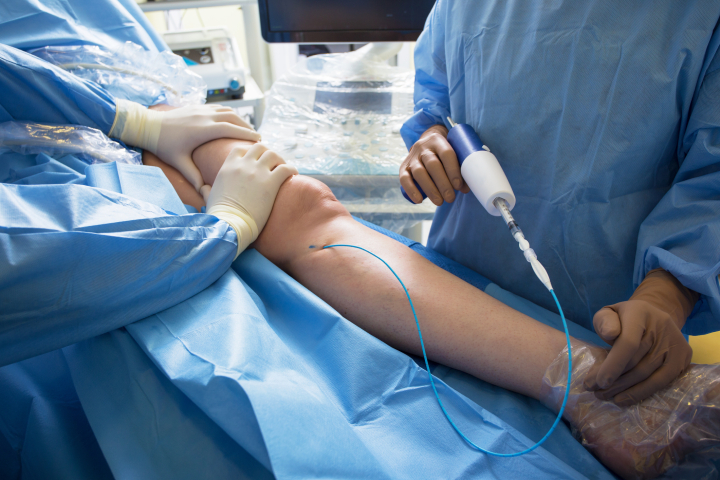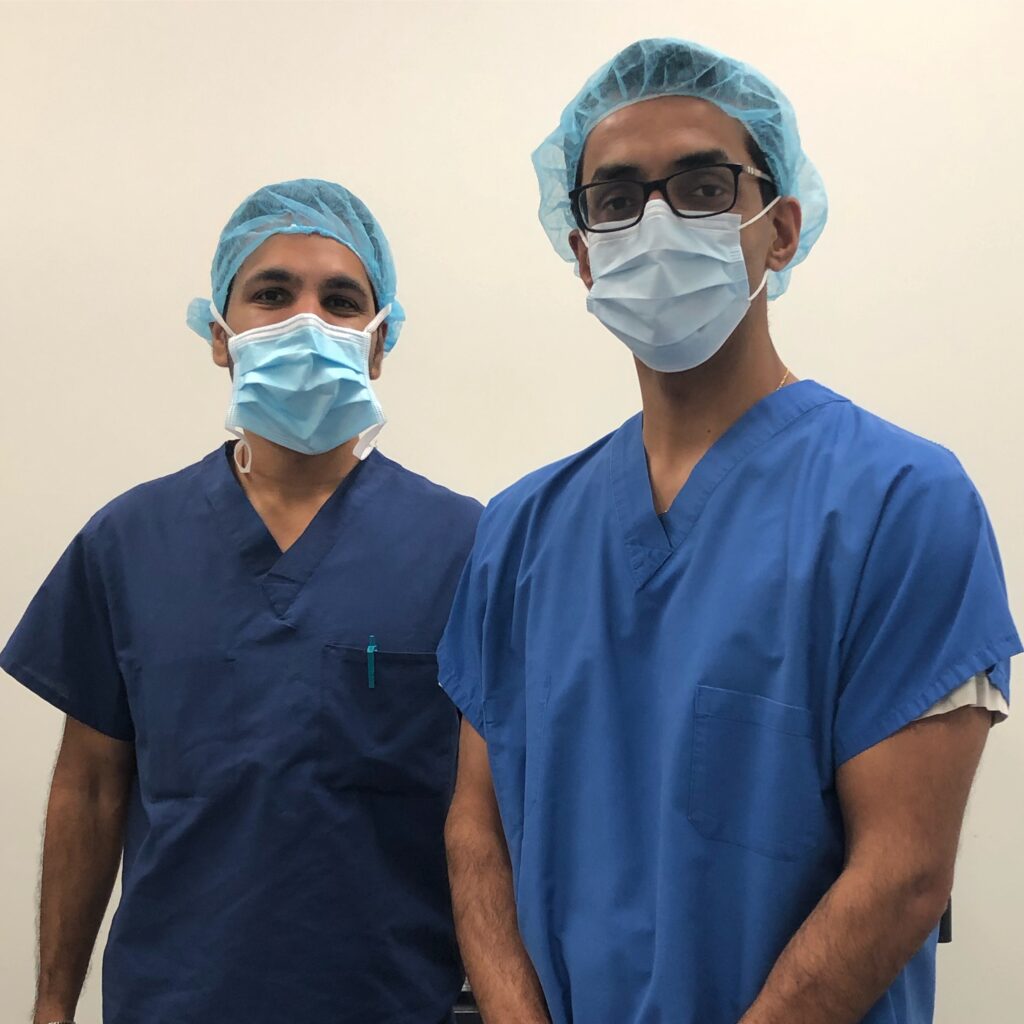Spider vein removal is a commonly performed cosmetic procedure around the world, with many cosmetic and healthcare professionals alike offering their services to people on an outpatient basis. While the goals of treatment remain the same, the methods to remove spider veins can be drastically different depending on your cosmetic or healthcare provider, which might make you nervous about the possible side effects you might experience.
So what are the complications that can occur from removing spider veins? Fortunately, most side effects from the different procedures are mild and can be resolved with the help of a healthcare professional. Most leg vein treatment options are perfectly safe as long as your provider is well-trained in the process; though the exact side effects you may experience can vary depending on which procedure was used for your treatment.
Learn More: What’s the Difference Between IPL Therapy and Radio Frequency for Spider Veins?
The risk of complications in removing spider veins depends on what method you'll use to remove them - the more invasive the method is, the higher the risks. This is why most patients and providers will shy away from procedures like varicose vein surgery to something that doesn't require any incisions.
These are some of the most common methods that your provider will suggest you do to manage spider veins outside of surgery:
In some situations, mild cases of spider or varicose veins can be treated with something as simple as physical exercises. Your provider or healthcare professional will give you some self-care tips to improve your blood circulation so your veins don't go through a lot of strain throughout the day.
In many cases, these are just methods of making sure that you move around and are physically active. Because spider veins form when blood pools in the arteries, promoting a normal flow of blood is crucial to managing spider veins on your own. Aside from increased physical activity, your provider may also suggest things like compression stockings to correct abnormal blood flow and give additional support to your weak vein walls.
Side effects of this type of treatment are fairly mild to non-existent, especially if you follow the instructions of your health care professional to the letter. As a common treatment for many cases of spider veins, self-care measures are generally safe for almost anyone to use.
However, the issue with this particular method of treatment is that it can only prevent future spider veins - it can't do much to the spider veins that are already there. If you already have significant spider veins under your skin or are starting to get symptoms like pain, swelling, and discomfort, your provider will try something else.
Laser treatments have been one of the preferred methods to get rid of spider veins since they can reach deeper veins without the need for too many incision sites or risking nerve damage. Endovenous laser treatments in particular work well on normal veins and enlarged veins alike, and can be used by almost anyone regardless of their skin type or skin color.
Endovenous laser treatment involves using a high-powered laser to close your veins from the inside. As the laser passes through the skin's surface, it creates scar tissues in your veins, which seals them shut and forces the blood to flow back to your deeper veins. This effectively removes spider veins without the need to penetrate the skin and causes minimal to no damage to the surrounding area. Deeper veins may require the use of a medical catheter, but this is rare.
Some side effects and complications that can occur include:
All of these side effects should resolve within a few days, or under the immediate aftercare of your laser provider. Most people who undergo laser treatment don't experience any side effects at all, especially if their provider is skilled in the use of the laser for their treatments.
Radiofrequency ablation works a lot like laser treatment - but instead of using a beam of light from a high-powered laser, it uses a specially-designed catheter to use radiofrequency energy to seal off spider veins. This method is less popular than endovenous laser treatment since it does involve incision sites, but it can work better for people who need pain relief from the symptoms of spider veins.
Like lasers, radiofrequency ablation uses heat to cause scar tissue to form around and inside spider veins, which cause them to close on themselves and funnel the pooled blood back to the larger veins. It's particularly effective at relieving the extra pressure that your legs experience from spider veins, and can be used on almost any patient.
Some side effects and complications that can occur include:
Due to the nature of the treatment, it's important to have a medical provider on hand to help you manage and mitigate any potential side effects from radiofrequency ablation. You may also choose to have an anesthetic applied to the area before the procedure to reduce any pain.
Sclerotherapy is a direct method that "fills in" the spider veins that you have so they seal shut and are reabsorbed by your body. Among non-surgical methods to remove spider veins, it's one of the most popular and most effective options, since it can work on almost any size of vein on the top layers of the skin.
Sclerotherapy uses sclerosing agents, which are liquid foam-like solutions that rapidly expand inside the injected vein and seal it shut. This causes any blood pooling in the damaged vein to go back into your larger veins and leaves behind a closed vein that's less visible on the surface of your skin. The procedure is quick, easy, and effective - especially if you find the right provider.
Some side effects and complications that can occur include:
Overall, sclerotherapy is recommended by many medical professionals since it can work on sensitive skin or on patients where laser therapy may cause severe skin discoloration. Since it's an injectable treatment, the procedure is quick and virtually painless, especially with the application of a topical anesthetic.

All of the above procedures are more preferable to spider vein surgery, since the downtime, costs, and effort associated with these methods are typically less than your average surgery. However, the exact type of procedure that you can use will largely depend on your medical provider, and the results of any physical tests that you'll take before your treatment.
Remember that all these methods require changing your blood flow in some way - so if you have a condition like anemia, you might not be eligible for some of them. Your provider will often choose to err on the side of caution when choosing a method that can get rid of your veins but will also avoid damaging the surrounding area or putting your body under a lot of strain.
In severe cases where your spider veins are causing you chronic and serious pain, your provider can make the call to remove the affected veins entirely. This process is called vein stripping or vein ligation. In this procedure, several small cuts are made on the surface of your skin, which exposes the vein. Your doctor will then tie these veins off to close circulation, then remove the veins in their entirety.
For less serious cases, you can go through an ambulatory phlebectomy, which is more suited to veins that are close to the surface of your skin. Generally, this type of procedure takes less time and effort compared to vein stripping – though it still requires considerable post-procedure downtime compared to the non-surgical options.
Read More: What’s the Easiest Way to Get Rid of Spider Veins on the Face?
Spider vein removals are typically considered cosmetic procedures, which means they aren't covered by most insurance companies. This is especially true if your spider veins aren't too severe - in which case, you'll need to pay for your treatments out of your own pocket.
However, if you're getting them because you're experiencing symptoms like swelling, pain, and problems with your blood circulation, you may be able to make the case for getting insurance coverage for your spider vein removal. This will require submission of documentation to your insurance company, and in some cases using self-care devices like compression stockings.
Either way, you should do a thorough price check on the specific practice you're getting your spider vein treatment from. Because of the variety of providers who have spider vein removal services, prices can often vary widely depending on where you live and the severity of your spider veins.

While complications can occur with any procedure used to eliminate spider veins, any serious side effects can be safely avoided once you find the right provider. Vein Center Doctor has extensive experience in the use of non-invasive yet highly effective procedures like laser therapy and sclerotherapy to quickly and safely remove spider veins and varicose veins.
If you're looking for a safe and effective way to remove veins from your skin without blood, incisions, or pain, go to Vein Center Doctor today. We specialize in non-invasive treatments that allow our patients to resume normal activity soon after their treatment sessions and ensure they have a healthy vein system well into their old age.
Reach out to us today and call 1-862-227-1054.
Most Insurance is accepted for treatment